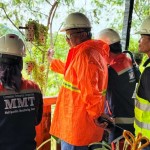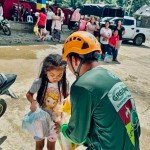TVIRD’s Mine Tour Program helps unite diverse peoples in their quest for development through responsible mining
He was surprised, rather pleasantly, by what he saw. Allie Sariol had thought he would see balding forests, murky creeks and a wide deep hole of an open pit in and around the mine area. The perception that mining destroys Mother Earth had been with him for a long time, which was why he participated in anti-mining pickets in his hometown of Siocon in Zamboanga del Norte. He had heard about the responsible practices of TVI Resource Development (Phils.), Inc. (TVIRD), which operates a copper mining project in Canatuan east of Siocon, but remained a doubting Thomas. To see, he said, is to believe.
That’s exactly what happened. When Sariol, a councilman of Barangay Matiag, did get to see Canatuan on one of the mine tours hosted by TVIRD for its key stakeholders, he instantly became a believer of responsible mining. He saw wide patches of natural grown and planted trees neatly lining the roads to the mine site, plant wastes properly contained in the firm’s tailings impoundment dams, and clear waters flowing in Canatuan Creek. Sariol is glad he was proven wrong about mining, a reaction common among visitors to the mine and precisely the outcome expected by TVIRD as it keeps its doors open to believers and non-believers alike.
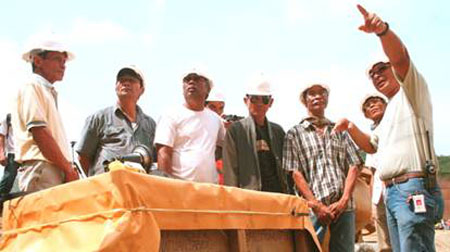
|
Above, Timuoy Boy Anoy (in plaid shirt) and the Subanon tribal leaders receive a briefing from Ed Nercuit, TVIRD Civil Engineering Services Manager (far right, at the company Sulphide Tailings Dam. Below, Timuoy Anoy clarifies a point during a discussion with TVIRD Mill Manager Germidas Laspinas at the TVIRD Santa Maria Warehouse in Siocon.
|
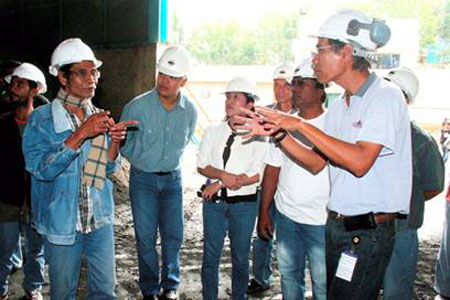
Sariol is just one of the hundreds of Siocon residents who have visited Canatuan – ancestral domain of the Subanon indigenous people (IPs) – under TVIRD’s Mine Tour Program. The company has received hundreds of visitors since 2005, shortly after it began its previous gold-silver project in mid-2004. Visitors have included foreign dignitaries, national and local elected and appointed government officials, IPs from other parts of the Philippines, students and teachers, the religious, as well as people opposed to mining.
“The (copper tailings impoundment) dam, I think, is well built,” says Sariol. “It is properly benched, and the engineer who constructed it is a Sioconian and a Muslim like me. There is no indiscriminate cutting of trees and the company is engaged in reforestation. I think TVIRD is doing its best to protect Siocon’s watershed and the environment of our town as a whole.”
Jose Dagala, Information, Education and Communication Officer of TVIRD’s Community Relations and Development Office, says “the Mine Tour Program is one of the means by which TVIRD strengthens its partnership with its stakeholders.” The Program, he adds, seeks to educate and inform people who have a stake in our company about its activities, including its programs and projects for its employees and host community, its environmental management and protection initiatives, as well as updates on its mining operations.
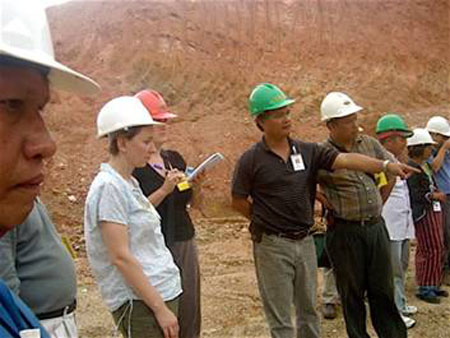
|
TVIRD maintains an open door policy to believers and non-believers of resource development. Above, TVIRD Vice President for Philippine Operations Yulo Perez tours representatives of the Bishop of England and Wales at the Canatuan mine pit as TVIRD President Eugene Mateo (partly hidden, extreme left) looks on. Below, officials of the B’laan indigenous tribe of Tampakan, South Cotabato recently toured Canatuan with officials of Sagittarius Mines, Inc.
|
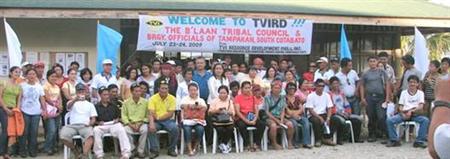
“The Mine Tour is also our way of putting into practice TVIRD’s long-standing Transparency Policy, especially to our Subanon partners, local government units, and mine regulatory agencies like the Environmental Management Bureau, Mines and Geosciences Bureau, and the Multi-Partite Monitoring Team,” says Feliece Yeban, TVIRD Vice President for Social Commitments. “Through this Program, we are able to explain to those who care to listen how we implement the Voluntary Principles on Security and Human Rights that our company has embraced, particularly in the way it deals with residents of our host and impact communities.”
Sariol relates that the tour “really was an educational one for me. It made me realize the value of listening to one another and the positive outcome of constructive dialogues. If not for the mine tour, I would still be ignorant on the importance of the industry to the socio-economic development of our country and the ways companies like TVIRD and its stakeholders can help each other in ensuring that the provisions of the Mining Act are followed to the letter. I wasn’t aware that materials used in building or making just about everything we are using nowadays – our homes, schools, and even the church – come from mining.”
“Before the Tour, I thought Canatuan was a place of polluted waters and unhappy Subanons. I accepted what mining opponents said without question. I was wrong,” Sariol added. “I’m so glad I was wrong.”
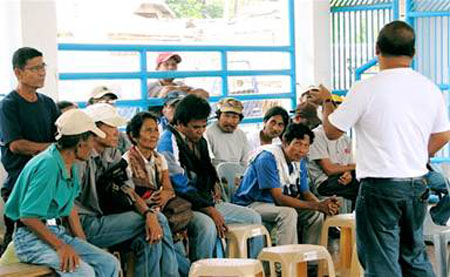
|
TVIRD Assay Laboratory Manager Gerry Gamelo (back to camera) provides Subanon tribal leaders with an overview of the company’s operations near the company warehouse in Santa Maria.
|
Remegia Gubantes, Chair Barangay Tagaytay, agreed with Sariol. She laments that some individuals resort to exaggerated claims to discredit mining, or to allegations that turn out to be unfounded. As the leader of a farming village whose residents rely so much on irrigation, Gubantes points out that mining opponents sow fear of environmental degradation. “If you listen to them, you tend to become biased against mining yourself,” she says. “Fortunately, there are now very few in my community. Of course their concerns are valid. I for one will not allow mining if it means there’ll be no more water to sustain our irrigation system, or if it will cause pollution or siltation. But we’ve been farming even before TVIRD came and the company’s operations haven’t affected our harvests. Thanks to the mine tour and to the company’s open door policy, I am now capable of educating my constituents on mining and on the Mining Act.”
For his part, Genaro Montemayor, chair of Barangay Datu Saililah, says the Mine Tour Program “is also a venue where we can raise to company officials issues and concerns brought up to us by our constituents. For instance, during the exit conference after the tour, I informed TVIRD Canatuan General Manager Ely Valmores about the road dust when company trucks pass by our barangay on their way to Sta. Maria Port to load copper concentrates. Right there and then, we got Mr. Valmores’ commitment to act on the matter.”
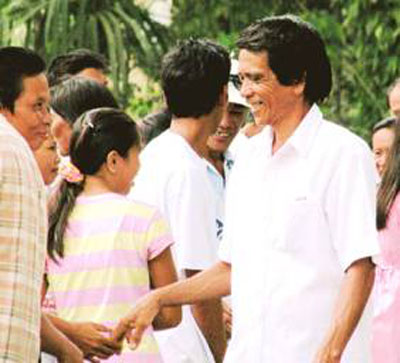
|
Above, Genaro Montemayor, Chairman of Barangay Sailila, and below, Allie Sariol (second from right), Councilman of Barangay Matiag, liked what they saw when they toured Canatuan for the first time. If not for the mine tour, I would still be ignorant on the importance of the industry to the socio-economic development of our country and the ways companies like TVIRD and its stakeholders can help each other in ensuring that the provisions of the Mining Act are followed to the letter.
|
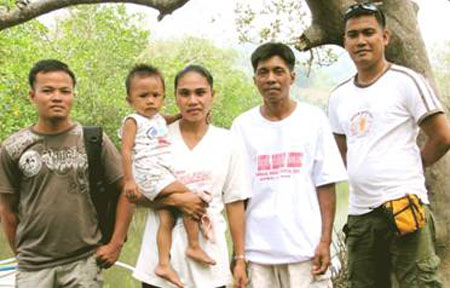
Among the Canatuan Mine’s recent visitors were the 30-member Subanon tribal leaders led by Timuoy (chieftain) Jose “Boy” Anoy. The administrators of the Certificate of Ancestral Domain Title area – which covers over 8,000 hectares of land straddling Siocon and adjacent Baliguian town and encompasses TVIRD’s 508-hectare mining concession – were provided insights on the company’s open pit mining method and on the tailings impoundment facilities. The tribal leaders also toured the copper plant and the concentrate warehouse in Santa Maria. At the Sulphide Dam, TVIRD Civil Engineering Services Manager Ed Nercuit assured the Subanon officials that the company, with the assistance of reputable international engineering experts, is following global standards in dam construction.
At the warehouse, Gerry Gamelo, TVIRD Assay Laboratory Manager and Copper Concentrate Management Team leader, also discussed with Timuoy Anoy the measures the team has been taking to protect the health and safety of the people and the seas of Sta. Maria.
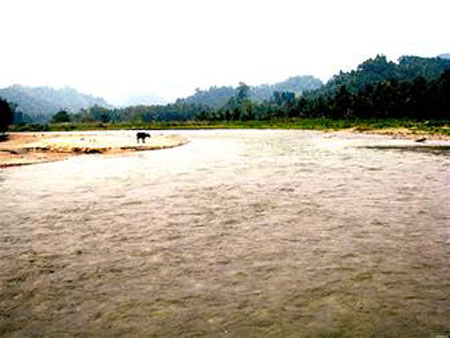
|
Mine visitors witness how TVIRD’s environmental management and protection initiatives in Canatuan help protect the waterways of Siocon, such as the Litoban River (above), the lifeline of irrigation systems that supply waters to, and ensure consistently rich harvests in, the town’s rice fields (below).
|
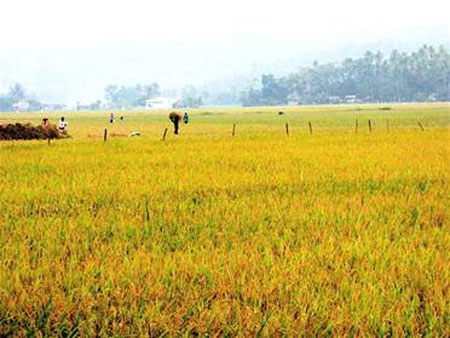
Village officials who had participated in the mine tours also call the experience “lakbay-aral” (education tour). Whatever term they use for the tour, its value can be seen in the unity it fosters among people from diverse cultural groups – Muslims, Subanons, and Christians – who support and stand for responsible mining. People who, like Sariol, firmly believe that development must be ensured not only for today’s generation, but also for generations to come. (Lullie Micabalo)

